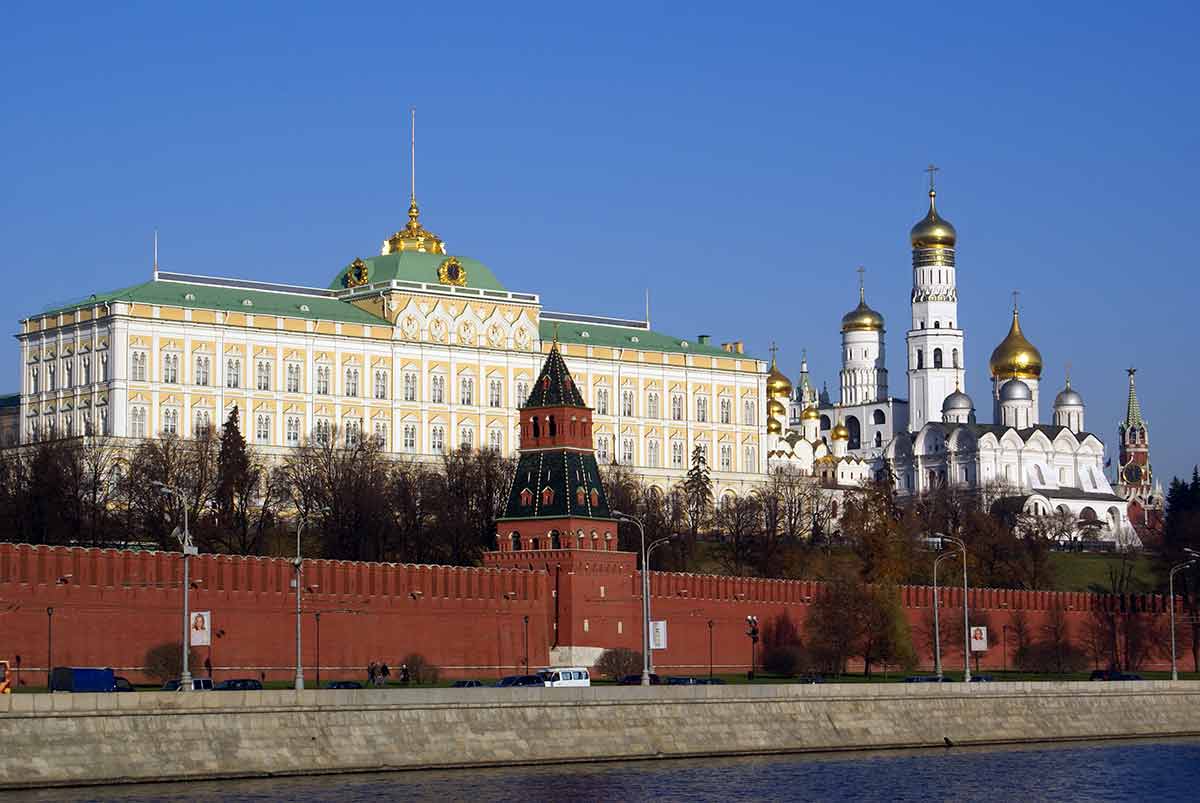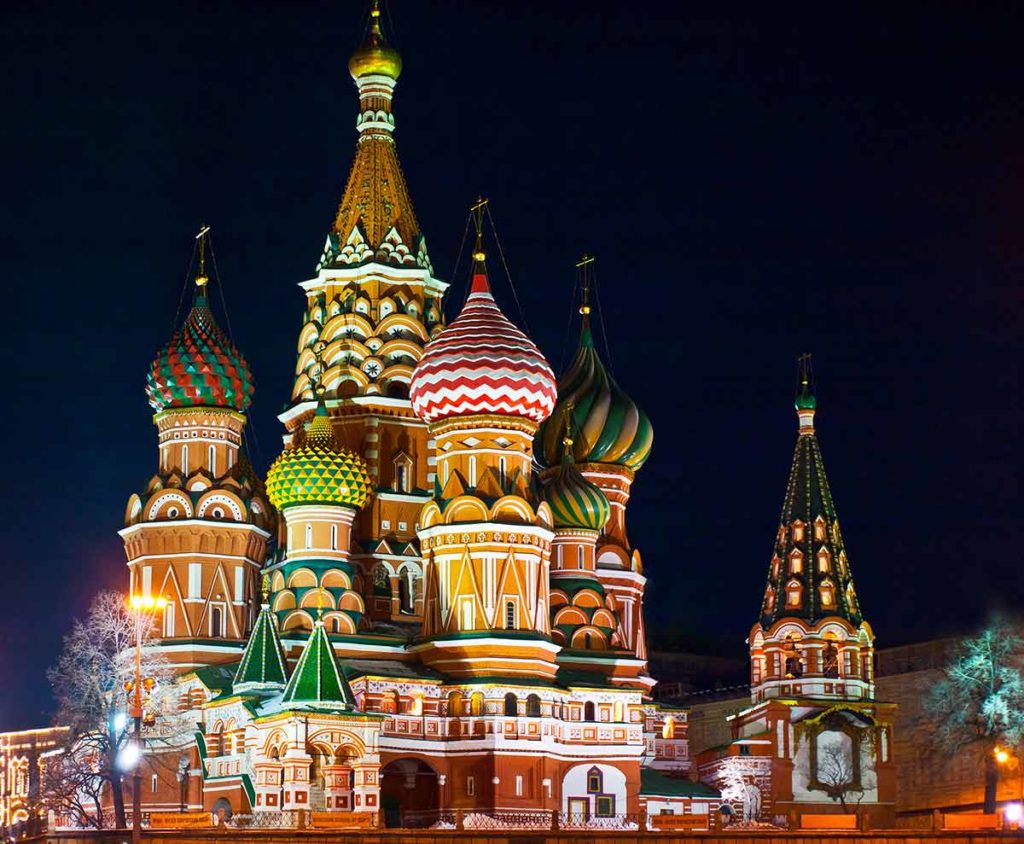
MOSCOW KREMLIN
The existing features of the Moscow Kremlin were built between 1485 and 1495 by skilled Italian architects. Traditionally, the Kremlin was the home of the tsar, until Peter the Great assigned St Petersburg, named after himself, as his seat. The Kremlin has a turbulent past; in 1917 the Bolshevik Uprising stripped Moscow of its capital status, and during the Soviet period, 28 of the original 54 buildings were destroyed.
ST BASIL’S CATHEDRAL
St Basils Cathedral lies to the south of Red Square. The cathedral, built in 1555 under the orders of Tsar Ivan the Terrible, was designed to symbolise the Heavenly City. Its walls are bold and colourful and feature many precious stones. Ivan the Terrible did not want his cathedral to be replicated anywhere else, and so blinded the architects so they could not recreate this place of worship.


RED SQUARE
The most famous place in Moscow is Red Square, which forms an important base for Moscow’s history. Red Square connects St Basils Cathedral and the Kremlin and is named after the brightly coloured bricks that pave the square. Construction on the square finished in the late 19th century. The square itself has had many purposes, inclining a marketplace and a Soviet parade ground.
CATHERINE PALACE
An impressive blue, cream and gold building named after Catherine the First, wife of Peter the Great, Catherine Palace was designed as a rival to the palace of Versailles. The palace in St Petersburg was completed in 1756 and took over 100kg of cold to decorate the exteriors of the palace, much to Catherine’s dismay. The palace houses many impressive rooms, including The Great Hall, often referred to as the Hall of Light.


BOLSHOI THEATRE
The Bolshoi Theatre is a historic theatre in Moscow, famed for its performances of ballet and operas. The theatre was initially given permission to be built by Empress Catherine the Second in 1776. Over time, and after two fires that destroyed much of the original building, the theatre was refurbished and officially opened as the Bolshoi Theatre to coincide with the coronation of Tsar Alexander the Second.